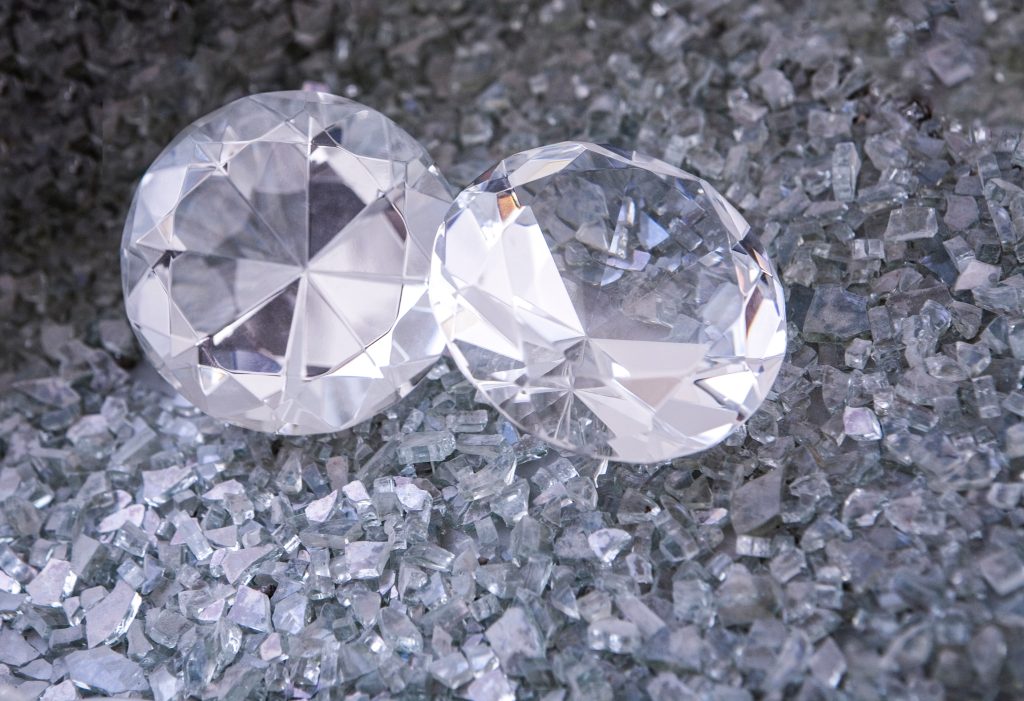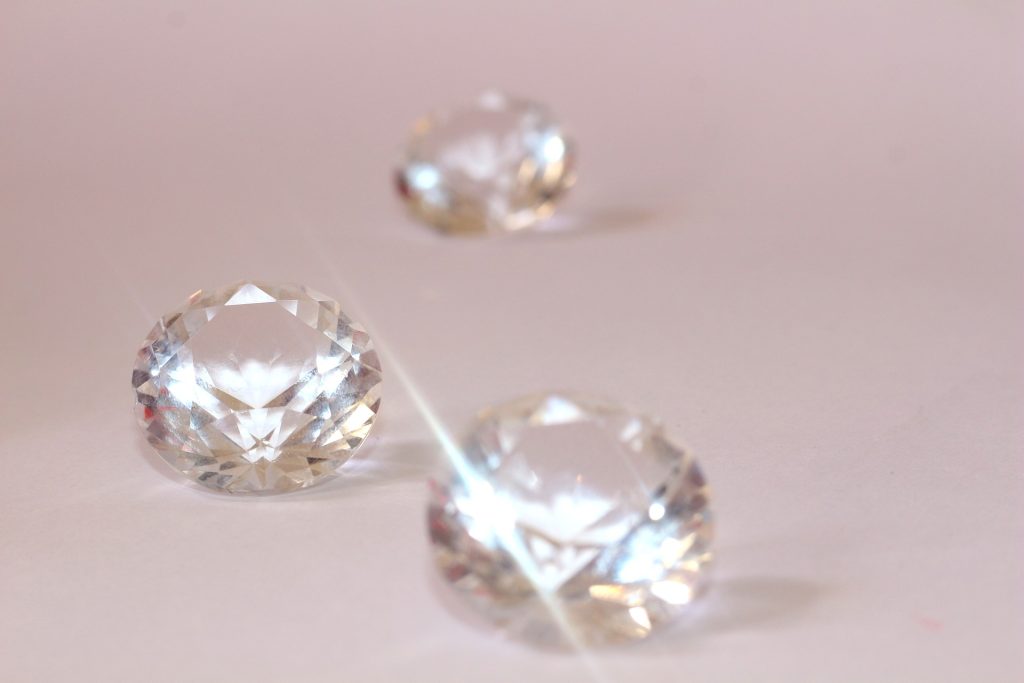If you’re looking to buy a ring with a high price tag, you might wonder if VS or SI is better. These diamonds are generally less expensive but have flaws that are visible to the naked eye. For those with a low budget, however, an SI diamond is a good choice, because it will still be beautiful. SI1 diamonds are also clean and less expensive, so you might as well consider purchasing one of these gemstones.
For this reason, VS (Very Little) and SI (Slightly Content) are the most popular purities. But it needs to be shortened a bit. Each class is divided into two levels: VS1 and VS2, SI1 and SI2.
While all four VS and SI diamonds are technically “clean looking” or easily detect ascending inclusions, some of these diamonds actually look much better than others.

Which is Better VS or SI Diamond?
Do not worry. Everything you need to know about VS and SI diamonds in one (slightly long) blog post. Read on to see the finish line of VS1 Diamond, VS2 Diamond, SI1 Diamond, and SI2 Diamond, and find out exactly which one to choose for your diamond engagement ring.
Without a doubt, the VS1 diamond looks great. Even at 10x magnification, the VS1 Diamond will look flawless to non-professionals. (VS1 grade diamonds have small inclusions that are difficult for experienced appraisers to see at 10x magnification.) For civilians like us, this means looking through a magnifying glass for a long time before even looking at a VS1 diamond. spot.
VS1 diamonds do not have high relief inclusions, such as a black spot in the center of the diamond, or inclusions that cause durability issues. VS1 diamond inclusions are not visible to the naked eye. It’s hard to find an example of a VS1 diamond that has inclusions even in a great spin video! And when your VS1 diamond is set on your engagement ring, you definitely won’t be able to see it.
But for most people, VS1 is overkill. It’s beautiful but you will usually pay more than you really need to get a beautiful diamond.
Risky Business
I think you should draw the line here. GIA SI2 grade diamonds have noticeable inclusions that can be easily seen by experienced graders at 10x magnification. If you look closely, the SI2 diamond inclusions are clearly visible to the naked eye. We may have seen a beautiful SI2 clarity diamond. But we have also seen many SI2 diamonds like this one.
Large Black Inclusion
If there is a large black inclusion in the center of the diamond, it always looks like it needs to be cleaned. Once you see it, you can never erase it. And while inclusions are easiest to see in the center of the table, SI2 inclusions near the pavilion can be mirrored, allowing inclusions to be seen more than once.
Some SI2 diamonds, like the one above, have both. If you’re on a budget, the SI2 might be an option, but be careful. Look for clean SI2 diamonds with clear inclusions, even if they are large. Remove SI2 diamonds with nicks, knots, etch dents, or manufacturer residue on fancy-shaped edges or ends that can cause durability issues.
Let’s face it, SI2 diamonds are much better and cheaper than diamonds sold in jewelry chains and retail stores. Most chain stores sell On or I clear diamonds.
Transparency Scale
All diamonds are graded on a transparency scale that takes into account the size, number, and type of inclusions. This scale was created by the Gemological Institute of America (GIA). The rating scale has 6 categories and 11 levels of sharpness of diamonds. The scale ranges from error-free or internal error-free FL and IF to included I. FL and IF diamonds have no visible inclusions or defects when viewed at 10x magnification. Diamonds also have inclusions that are clearly visible to the naked eye.
Finding a balance between the two will help you get the diamond you want within your budget, yet still, end up with a diamond that is visually appealing and still has a beautiful sheen.
Clarity Grading Factors
There are five different factors that can have an effect on the clarity of the diamond, these factors are size, nature, number, relief, and location.
Size – The larger the inclusion in the diamond, the lower the clarity grade will be. A large inclusion can also have an impact on the durability of the diamond, which is why a lower grade diamond should not be bought.
Nature – Nature refers to what type of inclusion it is and takes into consideration the depth of the inclusion. Inclusions are flaws that penetrate deep within the diamond, whereas blemishes are flaws that do not penetrate the diamond but are instead confined to the surface of the stone.
Number – The number of inclusions is important, as the larger the number of inclusions or blemishes, the lower the clarity grade of the diamond will be. However, if the inclusions are not visible, it will not have an impact on the overall number rating.
Location – The location refers to the position of the inclusion or blemish in the diamond. The closer the inclusion is to the center of the table, the more effective it will have on the clarity. This is because it interferes with the way light reflects within the diamond. Inclusions closer to the girdle are difficult to see, but if they are close to the surface they could damage the stone.
Relief – Relief is the distinctness of inclusion when viewed within the diamond. Therefore the greater the relief, the larger the effect on the clarity grade.
The clarity of a diamond is a big consideration when choosing one for a jewelry item. If a diamond is below SI1, the inclusions can be visible and affect its overall brilliance and sparkle. It is also not as durable as a diamond of higher clarity. So, if you’re looking for a diamond to wear for a lifetime, you should consider SI1 or SI2.
If you’re looking for a diamond with a higher clarity grade, consider buying a VS2 diamond. The clarity of an SI1 diamond is clearer and easier to look at without a loupe. On the other hand, an SI2 diamond is eye-clean, while some SI1 diamonds may have some inclusions that can’t be seen without a loupe. Besides, it’s important to remember that diamonds are not black and white, and you can never buy a perfectly clear diamond.
VS2 diamonds are slightly better than SI1 diamonds. They have fewer inclusions, and the flaws are harder to detect under a microscope. SI1 diamonds are nearly flawless but are easy to see when viewed under a 10x loupe. However, SI2 diamonds have inclusions that are visible to the naked eye or viewed from the side. This is why you should choose a VS2 diamond if you want to avoid the high price tag.
How to Set the Budget for VS and SI Diamond?
When buying a ring, the first thing most people think about is their budget. The amount of money they can spend on a diamond is largely dependent on their financial situation. Remember, though, that the most important factor is the meaning of the diamond. Your budget should not dictate the quality of a diamond. If you’re looking for a gift for someone special, a VS2 diamond is the best choice. You can save money by buying one with a higher clarity grade, but the diamond doesn’t lose the same amount of sparkle.
VS1 diamonds are eye-clean and don’t have as many inclusions as SI1 diamonds. However, this doesn’t mean that they are inferior to SI2 diamonds since they have fewer inclusions. The difference between the two types is negligible, especially when compared with SI1 and SI2 diamonds. Besides, the quality of a VS1 or VS2 diamond is the same – they contain undetectable inclusions.
What is the Difference in Clarity Grade Between SI1 & SI2?
Another difference between an SI1 and an SI2 diamond is the clarity grade. A D diamond has visible flaws that can be seen under magnification or by the naked eye. While the face of a D diamond will show these inclusions, an SI1 diamond will be less bright due to fewer reflections. The clarity grade of an SI2 diamond is usually the lowest, although it starts at a good price range.
Conclusion
Generally, an SI1 diamond is more eye-clean than an SI2. However, an SI1 diamond can have a substantial cloud, which may affect its ability to perform light. Therefore, it’s important to read the comments on the GIA certificate when you’re considering an SI1 diamond. You want to find a diamond with the best quality possible. And if you’re still unsure about whether or not you should buy an SI1 diamond, it’s best to opt for an SI2 diamond instead.
Another difference between VS1 and SI2 diamonds is the inclusions in them. An SI1 diamond will have a few small, invisible inclusions. These inclusions are generally located on the lower edge of the diamond. If the inclusions are large enough to be seen with the naked eye, the diamond will be a VS1 or an IF diamond. The difference is not always immediately noticeable. Moreover, SI1 diamonds are much cheaper than VS2 diamonds.
In addition to clarity, an SI2 diamond will have some inclusions. It’s more difficult to spot them without a magnification lens. The inclusions in an SI2 diamond are also larger than those in an SI1.







